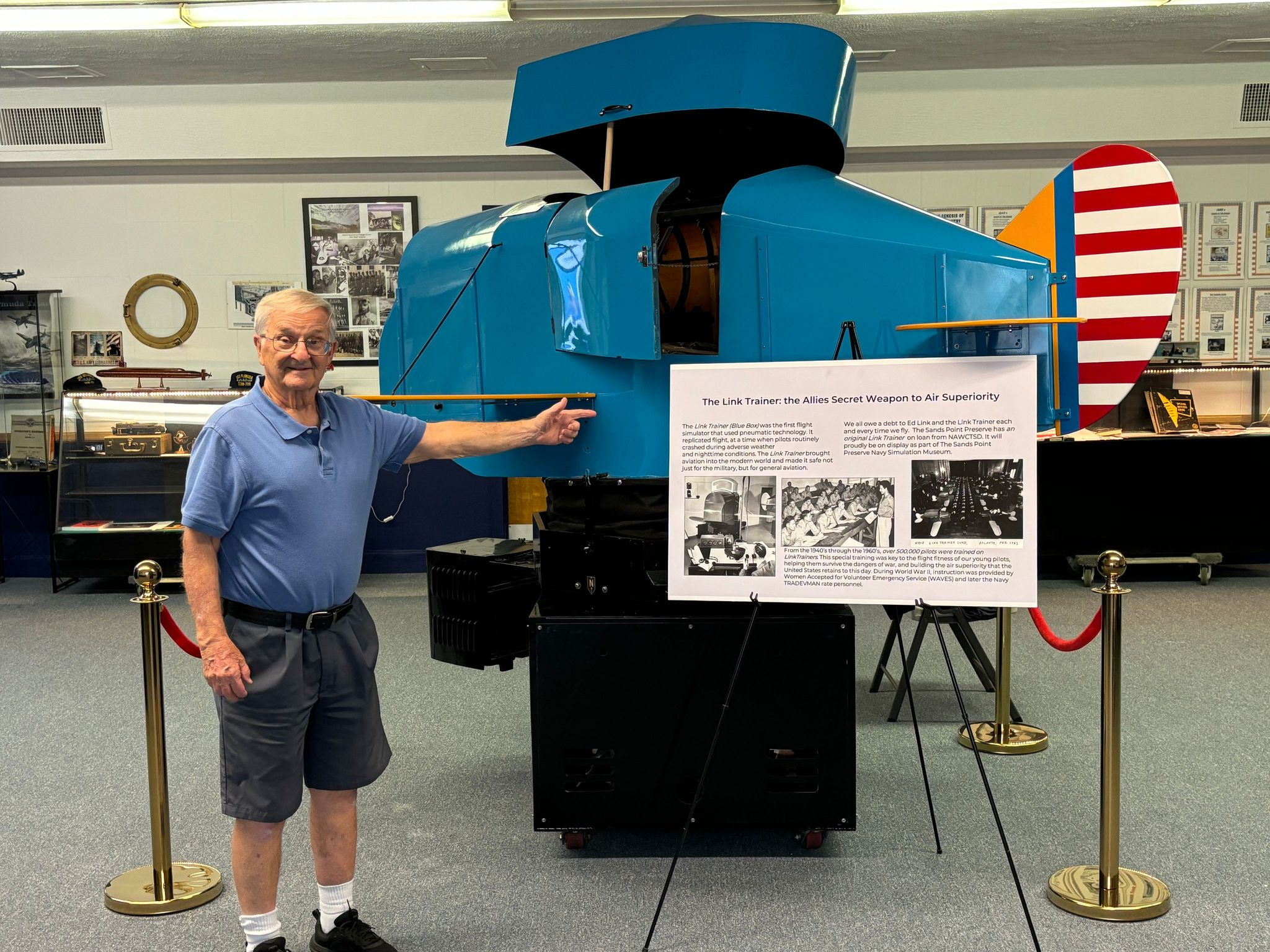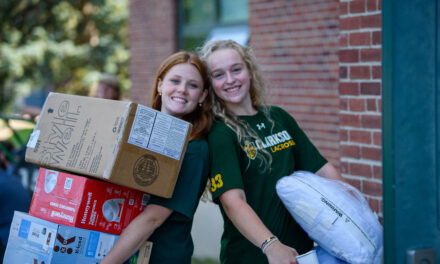By Hank Okraski ’58
Simulation is my passion.
It began long before my career in the field. In fact, it started when I was 11 years old. I mailed in a Wheaties box-top label and received a paper cockpit flight simulator. It was a cardboard control panel that allowed me to follow flight instructions from the radio character “Sky King.”
Several years later, I found myself at Clarkson, studying for a more advanced experience with flight simulation. I graduated in 1958 with a Bachelor of Electrical Engineering.
Clarkson gave me the fundamentals and basic tools to enter my career with the Navy. The technology of that era was analog computers using vacuum tubes. At Clarkson, I studied analog computers and circuits and even did some troubleshooting of electronic systems.
Real-time simulation computation relies on physics-based models. Clarkson placed emphasis on all aspects of Physics, further equipping me for a career in simulation.
Lastly, we worked in teams at Clarkson. So, operating in an industry, government, academia team was very comfortable for me.
After graduating from Clarkson, I went to work at Link Aviation in Binghamton, NY as a Field Service Engineer. After four years at Link, I started work at the Naval Training Device Center (NTDC) at Port Washington (Sands Point), NY in February, 1962 as an Electrical Engineer, GS-11, in Logistics Engineering (Aviation Trainers).
My job was to ensure that the training simulators in the Fleet were kept current with the parent aircraft by modifying or overhauling them as necessary. This entailed executing a modification and configuration management program for trainers assigned to me.
I was responsible for the planning of logistic support for the life cycle of the trainers, under a new program called Integrated Logistics Support (ILS) — a composite of the elements necessary to ensure the effective and economical support over the programmed life cycle.
I worked at Sands Point until 1965 when the entire NTDC was relocated to Orlando, Florida. On moving to Orlando with NTDC, I became a GS-13 as the A-7A Aircraft Weapons System Trainer ILS Manager. Eventually, I worked myself up to the Senior Executive Service (SES) level. I retired in 1994 as a Senior Executive with the Navy and put my energies into STEM.
I loved my career in this industry, and I haven’t been able to stay away even in retirement. Hence my newest project: a simulation museum at Sands Point.
How did this come about? Almost four years ago, I was on the Sands Point Preserve website and noticed a couple of sentences talking about the 20 years the Navy was there. Having first-hand experience about the Navy’s time at Sands Point, I thought we could do better in telling the story.
Tens of thousands of people visit the Sands Point Preserve on the North Shore of Long Island, NY, annually, taking in the beautiful grounds covering 200+ acres and the majestic castles built by the Gould and Guggenheim families during the glamorous “Great Gatsby” era of our nation’s history. Few of those visitors realize that the simulation industry had its birth in those very same castles when in 1946, Adm. Luis de Florez moved his Special Devices Division from downtown Washington, DC to what was then called the Guggenheim Estate. The organization was later renamed The Naval Training Device Center (NTDC).
I reached out to the Preserve, and eventually began a dialogue with its new Executive Director, Jeremiah Bosgang, and expressed my thoughts on putting together an exhibit to commemorate those who worked at NTDC.
Speaking with Jeremiah, he said with great exuberance, “Forget the exhibit…let’s build a museum!!” So, with that as my marching orders I moved out “flank speed.”
I approached fellow retirees, visited eBay daily, scrounged around garage sales and antique stores for vintage items — and I found them! Most successfully for our centerpiece we were able to get, on loan, a Vintage World War II Link Trainer from the Naval Air Warfare Center Training System Division (NAWCTSD) in Orlando, FL.
The Link Trainer (Blue Box) was the first flight simulator that used pneumatic technology. It replicated flight, at a time when pilots routinely crashed during adverse weather and nighttime conditions. The Link Trainer brought aviation into the modern world and made it safe not just for the military, but for general aviation.
In addition, the Navy funded the procurement of an off-the-shelf components STEM flight simulator that was assembled on-site.
Other exhibits at the museum include The History of Simulation: Technology, People & Organizations. A Tribute to Admiral Luis de Florez; NTDC/NAWCTSD Commanding Officers Over Time; high fidelity flight simulators; tributes to Charles Lindbergh & Amelia Earhart; and exciting STEM activities for students.
I designed the overall layout and proceeded to populate the 1,000 sq. ft. room in Castle Gould for Phase One. Jeremiah’s able and professional staff is putting the finishing touches on the displays.
I am proud to say I actually became a volunteer curator of the fledgling Museum. Jeremiah has been fully supportive in this unique initiative. I cannot say enough about his encouragement.
The museum’s opening on Veterans Day culminates a long but successful journey in paying tribute to the dedicated and talented men and women who worked at Sands Point in developing tools for effective training, giving our military an edge in combat and strength in preserving the peace.
Devoted to the history of Simulation & Training and the U.S. military and civilians who lived and worked at what is now the Sands Point Preserve during 1946-1967, this museum will display appropriate memorabilia representative of the birth, growth, and impact of simulation technology and promote the study of Science, Technology, Engineering and Mathematics (STEM).




